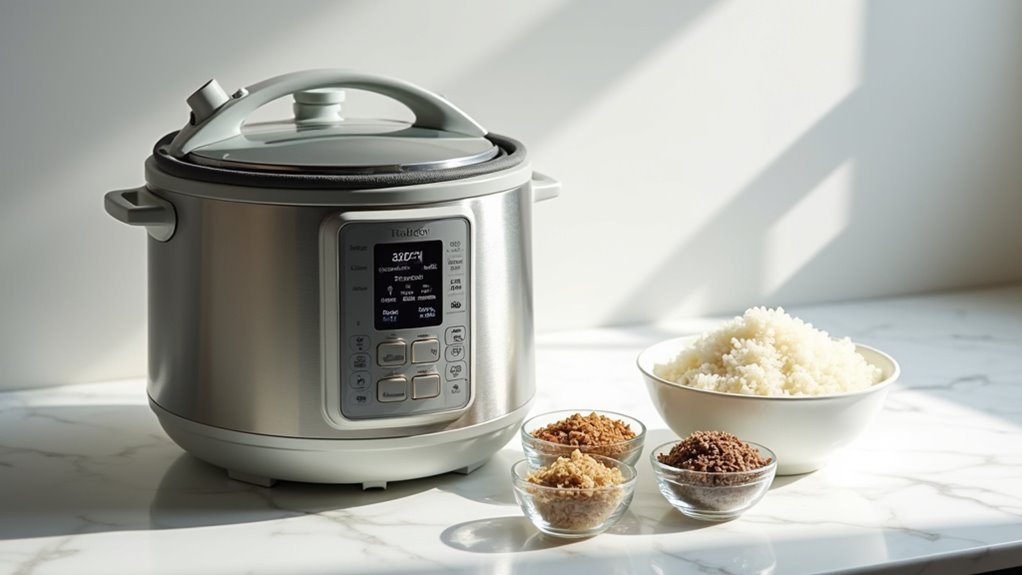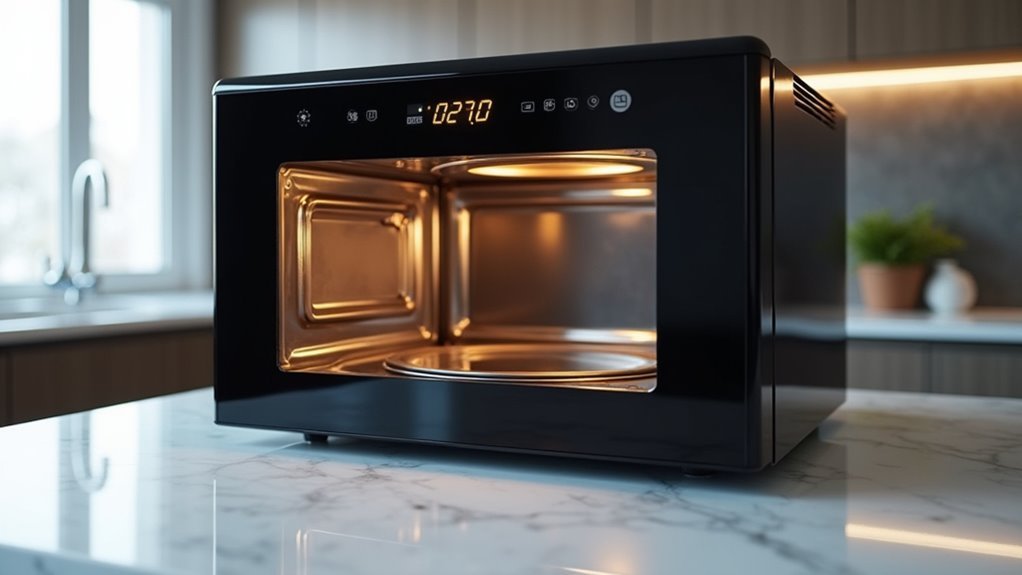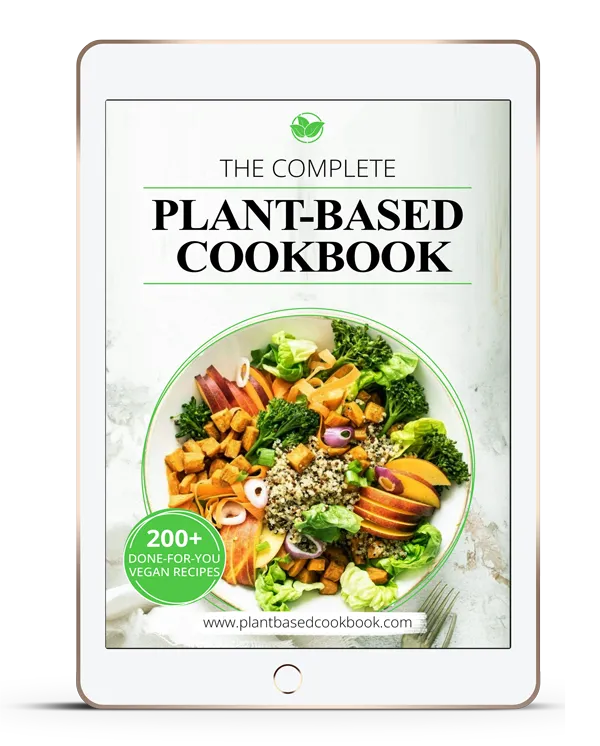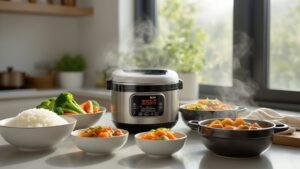We’ve all been there—you’re making rice and somehow it turns out mushy, burnt, or weirdly sticky despite following the exact same steps as last time. Well, that’s where fuzzy logic comes in, and honestly, it’s probably one of those technologies we don’t think about but really should. Unlike basic appliances that just follow rigid on-off commands, fuzzy logic actually mimics how we think when we’re cooking, making those subtle adjustments that can mean the difference between perfect rice and… well, let’s just say there’s a reason some of us have become experts at scraping burnt bits off the bottom of pots.
Table of Contents
ToggleHow Fuzzy Logic Mimics Human Decision-Making in Cooking
When you think about it, we’ve all had those moments in the kitchen where we’re constantly making tiny adjustments—maybe turning down the heat when the rice starts bubbling too aggressively, or letting it cook just a bit longer because it doesn’t quite look right yet.
That’s exactly what fuzzy logic does in rice cookers. It mimics human decision-making by processing imprecise information and adapting to changing cooking parameters like temperature and moisture.
Unlike rigid programming, this technology makes intuitive adjustments for ideal results, creating a more hands-off user experience that feels natural. This capability is particularly beneficial for achieving perfectly cooked rice, as a rice cooker with fuzzy logic can efficiently manage cooking moisture levels to ensure optimal texture.
The Four-Stage Cooking Process of Fuzzy Logic Rice Cookers
So how exactly does this human-like decision-making play out in practice?
Well, a Fuzzy Logic Rice Cooker operates through a sophisticated four-stage cooking process that mimics how we’d naturally approach cooking of rice.
It starts with standing, where the fuzzy cooker distributes steam evenly.
Then comes boiling, adjusting time and temperature for steady heat.
The absorbing phase gradually decreases heat while rice soaks up moisture—probably the most vital step.
Finally, resting allows off-heat finishing.
This methodical approach guarantees perfectly cooked rice every time, balancing moisture and texture like an experienced chef would. Additionally, this technology is known for reliability, similar to the Zojirushi NHS-18 Rice Cooker, which is praised for its top build quality.
Customization Options for Different Rice Varieties and Textures

Beyond the methodical four-stage process, what really sets fuzzy logic rice cookers apart is their incredible versatility—they’re like having a rice expert built right into your kitchen.
A fuzzy logic cooker doesn’t just cook rice; it understands what kind of rice you’re making and adjusts accordingly.
- Rice variety settings: Whether you’re preparing sushi rice, brown rice, or porridge, fuzzy theory optimizes cooking parameters for each type.
- Texture customization options: Choose between hard or soft, sticky or wet cooked rice based on your preferences.
- Specialized cycles: Quick-cook and keep-warm functions accommodate different timing needs.
Additionally, these cookers often include automatic keep-warm functions to maintain the perfect serving temperature until you’re ready to enjoy your meal.
Fuzzy Logic vs. Basic Rice Cookers: Performance Comparison
While basic rice cookers get the job done with their simple on-off approach, the difference in performance between them and fuzzy logic models is honestly pretty dramatic.
We’ve found that basic models fundamentally just heat up until the water’s gone, which often leads to overcooked or burnt rice. It’s like cooking blindfolded.
Fuzzy logic rice cookers, on the other hand, actually monitor what’s happening during cooking. Their advanced heating element adjusts temperature continuously, ensuring peak rice quality every time. This is especially important because Micom technology allows for precise cooking adjustments.
Basic models might work fine occasionally, but they can’t adapt like fuzzy logic can to cook rice properly.
Beyond Rice: Other Kitchen Appliances Using Fuzzy Logic Technology

Rice cookers aren’t the only kitchen appliances that have gotten smarter with fuzzy logic technology. We’ve seen this innovation spread across our kitchens, making cooking more precise and, well, foolproof.
- Washing machines use fuzzy logic to determine ideal water levels and wash cycles based on load size, though they’re not exactly kitchen appliances—I meant to say microwave ovens actually adjust cooking time and power levels based on food type and weight.
- Refrigerators employ fuzzy-logic algorithms to maintain perfect cooling based on internal conditions and stored items.
- Air conditioning systems adapt temperature settings using real-time environmental data. Multi-cookers like the Instant Pot Pro also utilize advanced technology to ensure optimal cooking results across various functions.
Unlike basic rice cookers that simply cook on high heat, these fuzzy-logic rice cookers and other appliances think before they act.
Frequently Asked Questions
How Is Fuzzy Logic Applied in Home Appliances?
We’ve integrated fuzzy logic benefits into smart appliances for enhanced cooking efficiency and user experience. It automatically adjusts temperature control and optimizes energy savings, making our kitchen appliances intelligently respond to varying conditions.
What Is Fuzzy Logic in Appliances?
Cutting to the chase, we’re looking at fuzzy control systems that use adaptive algorithms for temperature regulation and cooking precision. These smart user interfaces deliver efficiency improvement by making decisions like we do—with nuanced reasoning.
Is Fuzzy Logic Worth It for Rice Cookers?
We’d say fuzzy logic’s definitely worth it for rice cookers. You’ll get amazing cooking consistency, better user experience, improved energy efficiency, and incredible meal versatility that matches current market trends toward smarter appliances.
What Is Fuzzy Logic in Zojirushi?
Zojirushi technology uses fuzzy logic benefits through smart cooking microchips that enable precision heating and automated adjustments. We get consistently perfect rice because the user friendly interface mimics human intuition for ideal results.






